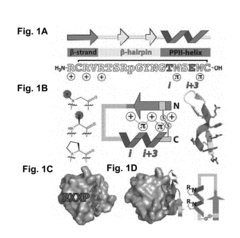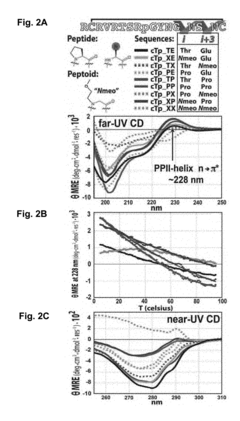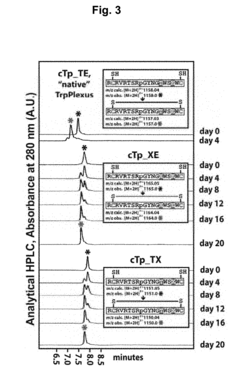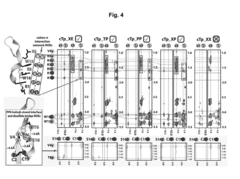Research on synthetic surfactant protein mimics - Eureka
Synthetic Surfactant Protein Background and Objectives
By examining the historical trajectory and identifying the driving forces behind the advancements in synthetic surfactant protein mimics, this section lays the foundation for understanding the current state of the technology and its future potential. It serves as a crucial starting point for the subsequent analysis and exploration of market demands, technological challenges, and potential innovation pathways within this field.
Market Demand for Synthetic Surfactant Proteins
- Market Size and Growth
The global market for synthetic surfactant proteins is projected to experience significant growth, driven by increasing demand from various industries such as personal care, pharmaceuticals, and environmental remediation. - Key Application Areas
- Personal Care Products: Synthetic surfactant proteins are used as mild and biodegradable alternatives to traditional surfactants in shampoos, soaps, and cosmetics.
- Pharmaceutical and Biomedical Applications: They have potential applications in drug delivery systems, wound healing, and antimicrobial coatings.
- Environmental Remediation: Synthetic surfactant proteins can be used for bioremediation of oil spills and soil decontamination due to their ability to enhance biodegradation.
- Market Drivers
- Growing consumer demand for eco-friendly and sustainable products.
- Increasing awareness of the environmental impact of traditional surfactants.
- Stringent regulations on the use of synthetic surfactants in various industries.
- Regional Market Dynamics
The market for synthetic surfactant proteins is expected to witness significant growth in regions with strict environmental regulations and a strong focus on sustainable products, such as Europe and North America.
Current State and Challenges in Synthetic Surfactant Proteins
- Current Challenges
Synthetic surfactant proteins face challenges in achieving the same level of performance and functionality as natural surfactant proteins. Key issues include:- Difficulty in replicating the complex molecular structure and folding patterns
- Limited understanding of the structure-function relationships
- Lack of cost-effective and scalable production methods
- Technical Bottlenecks
Several technical bottlenecks hinder the development of synthetic surfactant proteins:- Designing stable and biocompatible synthetic molecules
- Optimizing surface activity and interfacial properties
- Ensuring long-term stability and resistance to degradation
- Geographical Distribution
Research on synthetic surfactant proteins is primarily concentrated in:- United States (academic institutions and biotech companies)
- Europe (Germany, UK, and Netherlands)
- Asia (Japan, China, and South Korea)
Evolution Path of Surfactant Protein Technologies

Key Players in Synthetic Surfactant Protein Industry
Wisconsin Alumni Research Foundation
CHIESI Farmaceutici SpA
Core Innovations in Surfactant Protein Mimics
- The introduction of covalent and non-covalent intramolecular interactions to rigidify the polymer conformations. examples of covalent constraints include site-specific macrocyclization via huisgen 1,3-dipolar cycloaddition and head-to-tail macrocyclization. non-covalent interactions such as hydrogen bond surrogates can also be generated using metathesis reactions. the background technology highlights the significance of structural mimicry for the function of peptidomimetics and the need to enhance their binding affinities. by introducing these constraints, the scheme aims to improve the conformational ordering of peptidomimetic oligomers and potentially increase their binding affinities for various biological targets.
Future Directions in Surfactant Protein Research
- Rational Design of Synthetic Surfactant Protein Mimics
- Bioengineering of Surfactant Protein-Producing Organisms
- Hybrid Materials Combining Surfactant Proteins and Nanostructures










